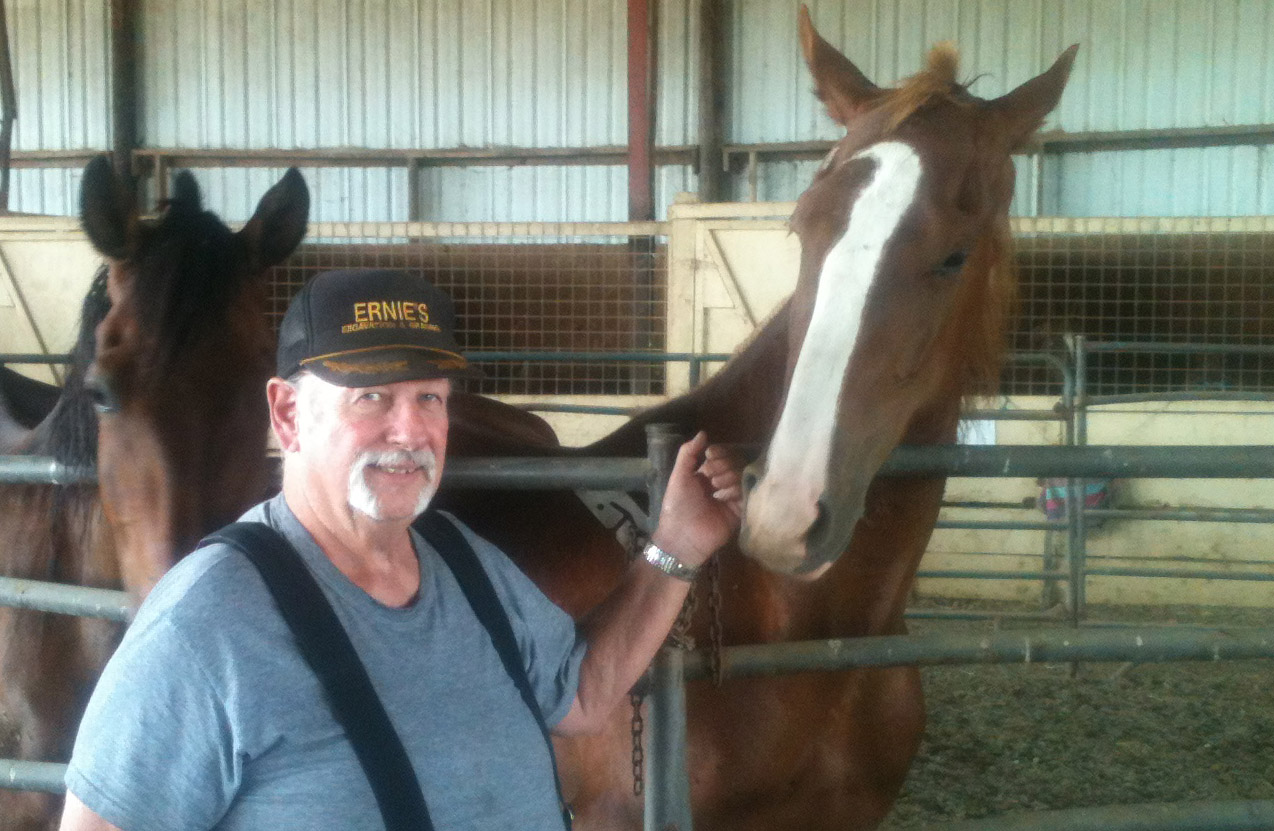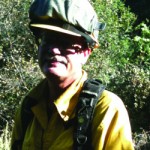The Wragg Fire: Reflections from a veterinarian, firefighter and horse-owner…
Dr. Michael Payne, July 29, 2015
The terse text message from my wife left me confused and anxious. It read simply “Should I evacuate?”
It was 4 p.m. on Wednesday afternoon and I was headed home early because my fire station had received a smoke investigation call. As a volunteer firefighter in Solano County, the only times I respond from Davis during work hours are on those rare occasions when there are potential threats to our own road southwest of Winters. A simple smoke investigation call, however, hardly warranted an evacuation of our three horses and Beth would certainly know that.
As I pulled onto Interstate 80 and headed west, the source of Beth’s concerns were immediately made clear. Even from 30 miles away a huge bloom of gray and white smoke was visible, rising well above the 1,500 foot high coastal range.
I called my Battalion Chief, Eric Ceremony, who quickly filled me in. The smoke investigation call had resulted from a previous small five-acre vegetation fire our fire district had responded to two days earlier, but which had subsequently smoldered and flared up. That “rekindling” incident was well controlled with the units already deployed. The column of smoke I was seeing from the Interstate however was a completely separate event, coming from a much bigger fire that started about three in the afternoon in Napa County.
“If you’re available you should respond directly to the station,” Eric said. “This could be a big one.” My battalion chief’s words proved prophetic. The Wragg fire, named for a canyon road near Lake Berryessa burned 500 acres in its first hour.
After my station’s brush truck, fire engine and water tender were assigned tasks and deployed, I called Beth and suggested she hook up the truck and trailer as a precaution. Mandatory evacuation had already been initiated on Quail Canyon and Mix Canyon Road. I would advise her if it looked like we weren’t going to be able to stop it at Pleasant Valley road, several miles from our house. Beth spent the rest of the afternoon keeping our neighbors informed and helping them prepare for their own evacuations.
I worked the next two days running our engine on Structure Protection duty. This typically involves parking your unit at a threatened residence and waiting for the fire to come to you. If the home owners have done a good job maintaining defensible space, the odds are good that firefighters can stop the fire from destroying the residence. Good home-owner fire preparation was certainly the case in the last and most threatened home we defended. The closest the fire ever got to their house was three feet of their backyard fence.
The success in protecting property is due in large part to use of the Incident Command System, the standard method of emergency response adapted throughout the United States. In the case of the Wragg Fire, ICS allowed more than 70 agencies to work under a single unified command bringing to bear more than 1,400 firefighters, 100 engines, 16 ground tankers, 11 bulldozers and at least 10 helicopters and 10 air tankers. Mutual aid equipment and personnel from as far away as San Francisco, Santa Rosa and Arbuckle were deployed to the fire line.
Emergency preparedness of course isn’t just about people and property, we have our pets and livestock to consider as well. The University of California’s Western Institute for Food Safety and Security (WIFSS) has a number of courses and projects dealing with animals in disasters. WIFSS for instance has helped organize farm preparedness fairs, trained first responders and participated in state-wide planning for dealing with animals in emergencies. WIFSS also has a variety of online resources available on its website, including the American Veterinary Medical Association’s introduction to disaster preparation for the whole family. For all animal owners the most important message about evacuation is that when you evacuate your home, don’t leave your pets behind.

Ernie Gaddini, a Winters, CA contractor opens his barn to evacuated horses. -Photo by Dr. Mike Payne (UCD WIFSS)
Similarly for horse owners preparing for wildfire, the most important contingency is provision for transportation and relocation. For horse owners wanting more information on wildfire preparedness, a truly outstanding resource is the UC Davis Veterinary Medicine Center for Equine Health’s full color publication “When Disaster Strikes, What Will You Do?” In the Yolo County emergency response plan, the Yolo Fairgrounds are designated as the official large animal relocation center for major disasters, but that doesn’t necessarily have to be your destination. Arrangements can be made in advance with other ranches or barns. During the Wragg fire a touching story came to light about Ernie Gaddini, a contractor north of Winters who opened his barn to 21 horses from a threatened barn in Solano County.
Ernie wasn’t asking for money or attention, he’s just one neighbor trying to help another out in a time of need. Which is really what it’s all about, isn’t it?
Dr. Michael Payne is a UCD veterinarian with the Western Institute for Food Safety and Security. He also is a volunteer firefighter for the Vacaville Fire Protection District serving the unincorporated areas surrounding Vacaville, California. He also cleans horse stalls every morning.


Michael: What an amazing (and well-written) story! Thank goodness for what you and so many others do in such perilous situations….and thank goodness that you and Beth and your neighbors are safe. You are an inspiration to me and, I’m certain, to others. Jean